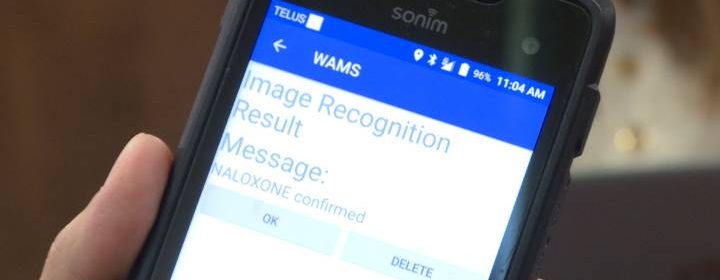Hastings Quinte paramedics work with American, Canadian government agencies developing A.I.

Artificial intelligence could be helping first responders like paramedics and fire fighters on the job possibly in only a few years.
For the last 18 months, an A.I. system called Audrey has been tested with the Hastings Quinte Paramedic Service.
Audrey is an acronym for Assistant for Understanding Data through Reasoning Extraction and Synthesis.
The paramedic services chief Doug Socha says the region has a mix of both urban centres and rural areas perfect for testing Audrey.
“The service is able to test in a rural environment, and that’s not only important for our area but areas across Canada and other places that have decreased connectivity,” Socha said.
While Audrey is stored in the cloud, paramedics carry a high-tech cell phone called a wearable Alert Monitoring System, or W.A.M.S. It has a voice recognition system that allows a paramedic in transit with a patient to relay information to an emergency room without having to write it down or stop attending to the patient.
Paramedic Merilee Stewart has been working with the W.A.M.S testing the A.I.
“If there is a cellular problem or connection problem,” Stewart said, “we can have her send that directly to the physician.”
The line of communication works two ways, Stewart says.
“The physician then reviews the form, adds his or her orders for future treatment, then hits a button and sends it back to us,” Stewart explained.
The development of Audrey involves both American and Canadian agencies.
On the American side of the border, Homeland Security and NASA’s Jet Propulsion Lab have been involved. On the Canadian side, it’s been Defence Research and Development Canada’s Centre for Security Science.
DRDR CSS falls under the Department of National Defence.
Audrey’s image processing capability also allows it to read labels on medication, something that can play a role in improving patient safety, Stewart says.
“Specifically medication errors, medication checks,” Stewart explained. “Sometimes it’s just us alone in the back and you may have to give a medication.”
Jay Braun is a software engineer with NASA’s Jet Propulsion Laboratory and Audrey’s technical task manager.
Braun says Audrey can be invaluable as a double-check for first responders in the field having to react quickly in difficult situations.
“Audrey never gets rattled,” Braun said. “Audrey never fatigues.”
Because Audrey works in real time, Braun says, the system could help to improve response times.
The algorithms could connect to CCTV’s and identify traffic congestion or other road issues, allowing emergency services to reroute while on the way to a scene.
The image recognition capabilities can also give first responders a better understanding of what they may have to deal with before they arrive.
“If a photo sent in by a bystander on their text messaging, if that was perhaps a fire, smoke perhaps, we would also detect propane tanks because that would increase the level of danger from the situation.”
Audrey’s capabilities are still being refined but Braun says they will soon be looking for partners to make the software commercially available.
“We do plan in the very near future to hand off our technology to a commercial partner,” Braun said. “We already have an agency of the United States looking for commercial partners.”
Still, it could be several more years before Audrey comes into regular use by emergency services.
Sign up for our Health IQ newsletter
© 2019 Global News, a division of Corus Entertainment Inc.
Source: Read Full Article
